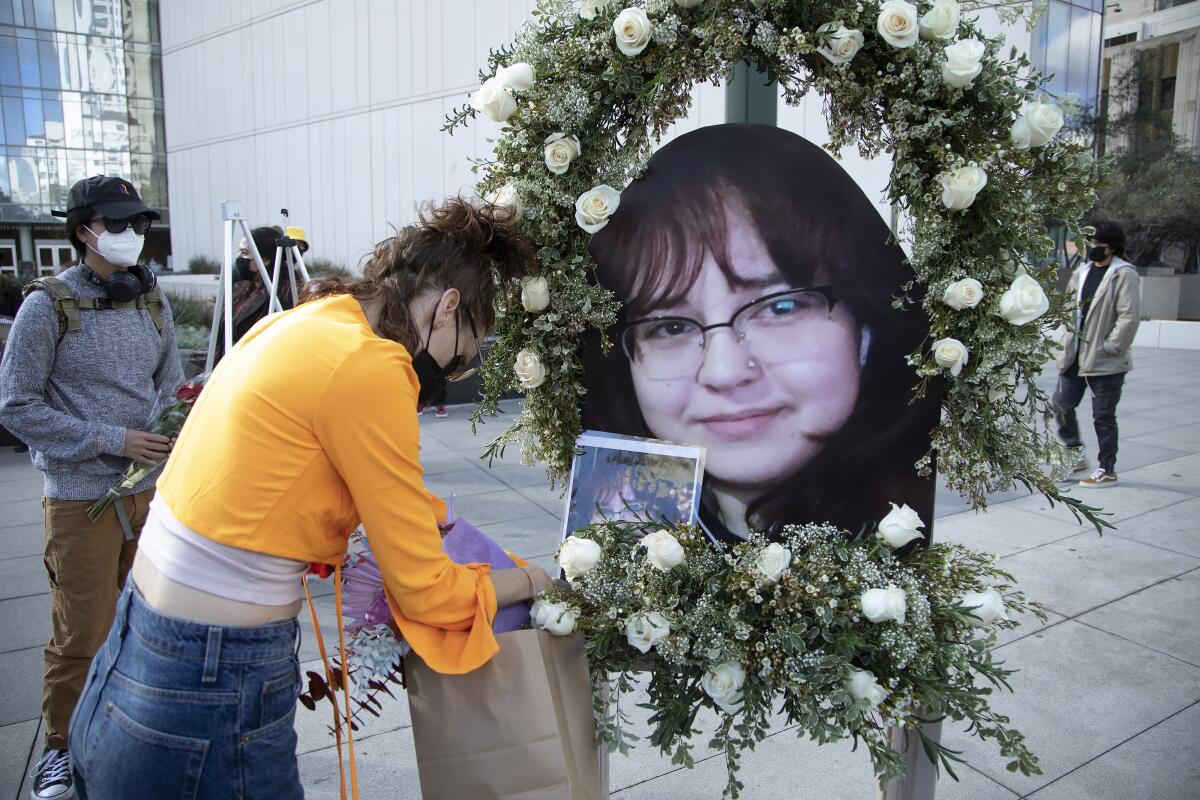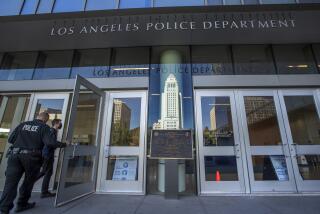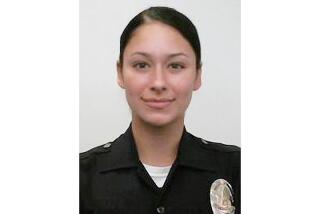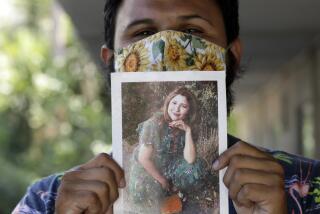Police commission rules officer broke policy in fatal department store shooting

- Share via
The Los Angeles police officer who inadvertently killed a teenage girl when he shot at an assailant in a North Hollywood department store late last year was justified in firing his weapon once, but was wrong to keep shooting, the city’s Police Commission ruled on Tuesday.
In reaching its conclusion, a divided commission broke with LAPD Chief Michel Moore, who recommended the commission find Officer William Dorsey Jones Jr.’s decision to shoot was unreasonable and violated the LAPD’s policy on deadly force.
The rulings brought an element of closure to an exceptionally tragic episode, in which a bullet fired by Jones inside a Burlington Coat Factory store missed its target and killed 14-year-old Valentina Orellana-Peralta, who was hiding in a dressing room with her mother. Valentina’s death led to an outpouring of grief from Los Angeles to her native Chile, and prompted L.A. Mayor Eric Garcetti to pledge to her mother that the city would deliver “transparency and justice” in piecing together the events that led to her killing.
In a report to the commission summarizing the findings of an extensive internal investigation into the Dec. 23 incident, Moore wrote that he believed another officer in Jones’ shoes would not have thought that deadly force was “proportional, objectively reasonable or necessary.”
In a 3-2 vote made in a closed-door session, however, the commission disagreed with Moore, concluding the first of three shots Jones fired from a rifle was in line with department rules on the use of force.
All but one commissioner voted to accept Moore’s recommendation that the second and third shots ran afoul of department policy.
Moore’s report did not specify which of Jones’ shots struck Valentina, and it is not known whether LAPD investigators determined this.
The commission also ruled that the tactics that five officers and a supervising sergeant used while confronting the assailant were improper.
It is unknown which officers’ tactics the commission found lacking because the panel did not name officers in announcing its findings. Moore’s report, however, included officers’ names. In it, the chief found Jones’ tactics were flawed, in part, because he had failed to learn from other officers on the scene that the suspect was not armed with a gun as had been reported by a 911 caller.
The decision whether and how to discipline Jones and any of the other officers now rests with Moore.
The assailant, Daniel Elena-Lopez, had assaulted customers in the department store with a bicycle lock and was holding the lock when Jones fatally shot him. Video of the shooting showed Jones rushing past other officers as they searched for Elena-Lopez and coming upon a badly injured woman in an aisle. Seeing Elena-Lopez at the end of the aisle, Jones then fired three rounds in quick succession.
Jones told department investigators he believed he only fired twice and did so because he thought Elena-Lopez was raising his arm with what the officer perceived to be a gun. The department probe found that Jones actually fired three shots, from a distance of about 16 feet.
In the same interview, he said that he had heard his fellow officers telling him to slow down before the shooting, but then saw the woman Elena-Lopez had assaulted and rushed to her side, believing that she’d been shot.
Jones told investigators he believed the wall behind Elena-Lopez was an exterior wall of brick that would stop any stray bullets. In fact, there were dressing rooms behind the thin drywall and one of the bullets skipped off the floor, tearing through the wall and striking Valentina. She died within minutes, according to Moore’s report.
Moore also faulted the tactics of Sgt. Jerald Case, one of the first responders on the scene. As the ranking officer, the chief wrote in his report, Case should have assumed a more active role in leading the other officers into the store to confront Elena-Lopez.
The incident reignited calls for fundamental changes to the city’s police force, with many critics calling for Jones to be charged criminally. Some critics said Tuesday’s ruling sent the wrong message.
The commission’s ruling was “really about attempting to split the difference” in an encounter in which the police’s actions appeared indefensible, according to Pete White, executive director of the Los. Angeles Community Action Network.
“I don’t believe that there was any shot that was fired that could be considered justified,” White said.
An autopsy found that Elena-Lopez was on methamphetamine at the time he was shot. He had been the subject of several 911 calls earlier in the day. The report shed light on the chaotic scene that ensued later at the Burlington store, where employees and customers made calls to 911 for help. At least one of the calls reported a man was shooting inside the store.
Earlier this summer, Valentina’s parents filed a lawsuit against the city, Jones, the LAPD and Burlington Stores Inc.
In their suit, Soledad Peralta and Juan Pablo Orellana Larenas accused the LAPD of failing to “adequately train and supervise” the officers who confronted Elena-Lopez in the department store.
“More importantly, within the Los Angeles Police Department, there was and exists a custom, policy and practice ... that fostered an environment that allowed and permitted this shooting to occur,” read the suit.
The family of Elena-Lopez has filed its own wrongful death suit against the department, alleging that the 24-year-old was no longer a public safety threat when police arrived.
The case remains under investigation by the California attorney general and the police commission inspector general.
More to Read
Sign up for Essential California
The most important California stories and recommendations in your inbox every morning.
You may occasionally receive promotional content from the Los Angeles Times.











